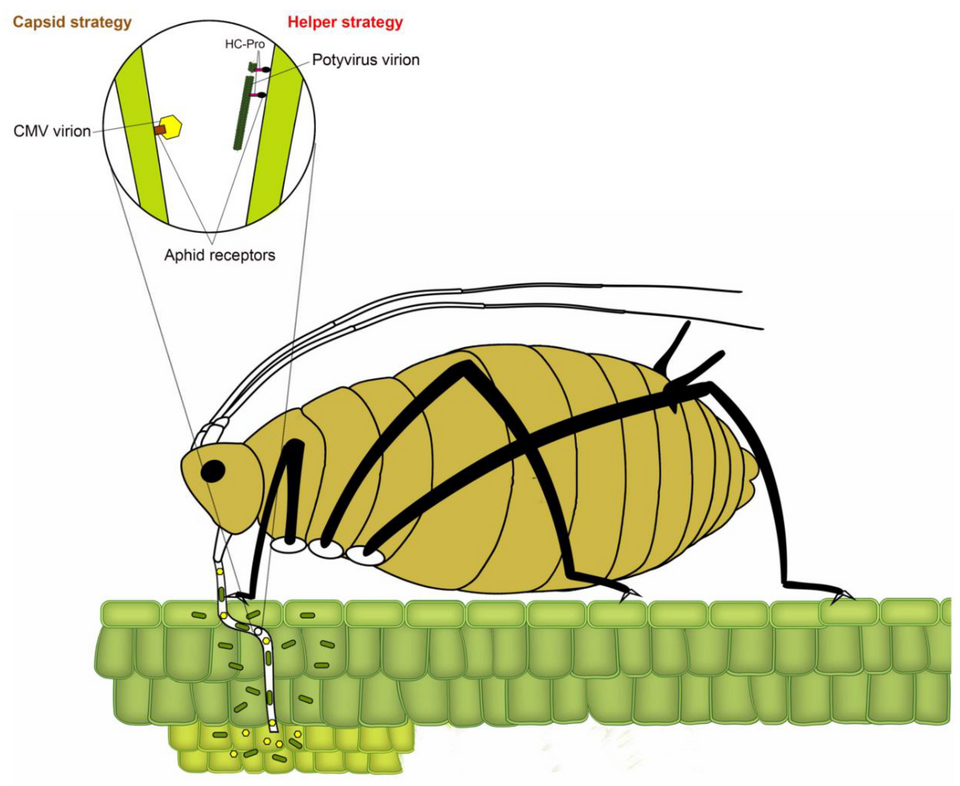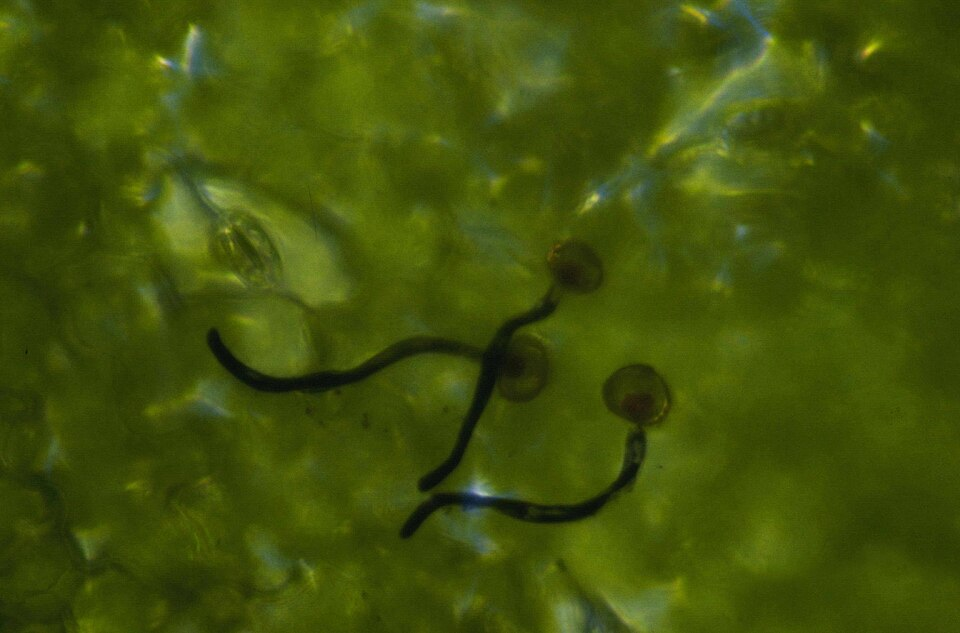OCR Specification focus:
‘Understand transmission via direct and indirect means, including vectors, spores and the influence of climate and social factors; no symptoms detail required.’
Communicable diseases spread between individuals and species through various direct and indirect mechanisms. Understanding transmission routes helps prevent infection in both animals and plants, protecting health and ecosystems.
Transmission of Diseases in Animals and Plants
Pathogens such as bacteria, viruses, fungi, and protoctists can move from one host to another through diverse transmission routes. The mode of transmission affects how rapidly a disease spreads and how effectively it can be controlled. In both animals and plants, transmission can be broadly classified as direct or indirect.
Direct Transmission in Animals
Direct transmission occurs when a pathogen passes immediately from one host to another without the involvement of intermediaries. This can happen through:
Physical contact such as touching, kissing, or sexual intercourse (e.g. HIV/AIDS transmission via sexual contact).
Exchange of bodily fluids, such as blood-to-blood contact (e.g. sharing contaminated needles).
Droplet infection, where pathogens are spread through aerosols produced by coughing or sneezing.
Faecal–oral transmission, where pathogens in contaminated food or water enter another individual’s digestive tract.
Direct Transmission: The immediate passage of a pathogen between hosts without an intermediary or environmental stage.
These routes rely heavily on close contact and behavioural patterns among individuals. For instance, overcrowding and poor hygiene increase the likelihood of direct transmission.
Indirect Transmission in Animals
Indirect transmission involves an intermediate stage or agent that helps transfer the pathogen to a new host. This can include vectors, fomites, or the environment.
1. Transmission via Vectors
Vectors are living organisms that carry pathogens from one host to another, often without being affected themselves.
Vector: A living organism that transmits a pathogen from an infected individual to an uninfected one.
Common examples include:
Mosquitoes transmitting Plasmodium species causing malaria.
Tsetse flies spreading African trypanosomiasis.
Fleas transmitting the bubonic plague bacterium Yersinia pestis.
Vector efficiency depends on climate, habitat, and availability of hosts. Warmer temperatures can increase vector reproduction and thus disease spread.
2. Transmission via Fomites
Fomites are inanimate objects capable of carrying infectious material, such as bedding, clothing, or medical instruments.
Example: Towels contaminated with fungal spores causing athlete’s foot.
Proper disinfection and sterilisation reduce fomite-based spread.
3. Transmission via Water, Air, or Soil
Pathogens can survive outside hosts for varying durations, depending on environmental stability:
Airborne transmission: Influenza virus and Mycobacterium tuberculosis travel in droplets or dust.
Waterborne transmission: Vibrio cholerae (cholera) spreads through contaminated water.
Soil transmission: Some fungi and bacteria persist in soil, infecting wounds or mucous membranes when contact occurs.
Environmental and Social Factors Affecting Animal Disease Transmission
Transmission dynamics are shaped by both environmental and social variables:
Climate: Warm, humid conditions favour vector survival and reproduction (e.g. mosquito populations).
Seasonal changes: Can affect pathogen persistence and animal congregation patterns.
Population density: Overcrowding facilitates droplet and contact transmission.
Socioeconomic factors: Access to sanitation, healthcare, and education impacts infection rates.
Cultural practices: Rituals or habits involving animal contact may enhance exposure risk.
These influences illustrate how biological, environmental, and human factors combine to determine transmission efficiency.
Transmission in Plants
Like animals, plants experience direct and indirect pathogen transmission. Plant pathogens include bacteria, fungi, viruses, and protoctists, often spread through environmental and biological interactions rather than behaviour.
Direct Transmission in Plants
Direct transmission occurs when a pathogen enters plant tissue without an intermediate carrier. Routes include:
Contact between plants, such as touching of leaves or stems carrying spores.
Natural openings (stomata) or wounds created by mechanical damage.
Seeds or vegetative propagation, where infected material passes pathogens to offspring.
Example: Tobacco Mosaic Virus spreads through contact between infected and healthy leaves or contaminated tools.
Direct Plant Transmission: Movement of a pathogen from an infected to an uninfected plant via physical contact or internal tissue continuity.
Indirect Transmission in Plants
Indirect plant transmission involves vectors, environmental agents, or long-lived pathogen stages such as spores.
1. Insect Vectors
Insects such as aphids, whiteflies, and leafhoppers transmit viral or bacterial diseases by feeding on plant sap.
Example: Aphids transmit barley yellow dwarf virus and potato leaf roll virus.

Model of aphid–virus interactions at the stylet tip for non-persistent transmission. It contrasts capsid-mediated versus helper-component (HC-Pro)-mediated binding that enables rapid acquisition and inoculation during brief probes. The mechanistic details exceed syllabus depth, but the image effectively evidences vector-based spread. Source.
Insects may act as mechanical vectors (carrying pathogens externally) or biological vectors (pathogens replicate inside them).
2. Spores and Water
Many plant pathogens produce spores that enable long-term survival and dispersal.

Light micrograph of rust urediniospores germinating on a bean leaf, showing emergent germ tubes penetrating host tissue. It exemplifies how spores serve as durable dispersal and infection units before wind or rain splash spread them to new hosts. The image is a real-world photo (not a diagram) and contains no extra syllabus-beyond labelling. Source.
Spore: A resistant, often dormant reproductive or dispersal structure allowing survival in unfavourable conditions and spread to new hosts.
Spores can be transmitted:
By wind, e.g. Puccinia graminis (wheat rust).
By rain splash, spreading fungal diseases across nearby plants.
Via watercourses, distributing pathogens through irrigation systems.
3. Soil and Human Activity
Soil-borne transmission: Pathogens such as Ralstonia solanacearum (bacterial wilt) persist in the soil, infecting roots.
Farming practices: Contaminated tools, boots, or machinery can transfer pathogens between fields.
Transport of infected plants: Global trade and plant movement spread pathogens like Phytophthora infestans (late blight).
Climatic and Environmental Influences on Plant Transmission
Environmental conditions greatly determine the rate and range of disease spread:
Temperature and humidity: Warm, moist conditions enhance fungal spore germination and bacterial growth.
Wind and rainfall: Aid the dispersal of airborne and waterborne spores.
Soil composition and pH: Influence microbial survival.
Human intervention: Monoculture farming and irrigation practices may increase susceptibility.
Summary of Key Transmission Concepts
Transmission occurs via direct or indirect mechanisms in both animals and plants.
Vectors and spores play major roles in spreading infection.
Environmental, climatic, and social factors significantly affect transmission rates.
Effective disease prevention relies on understanding and interrupting these routes.
FAQ
Social behaviours such as grooming, mating, and communal feeding increase opportunities for pathogens to transfer directly through contact or bodily fluids.
In social species like primates or livestock, hierarchy and group size affect exposure levels — dominant individuals often make more contact, while dense herds increase droplet and faecal–oral transmission.
Seasonal behaviours such as migration or mating can also heighten transmission by concentrating populations or mixing previously separate groups.
Tropical regions provide warm temperatures and high humidity, ideal for vector survival and breeding.
Mosquitoes, flies, and ticks reproduce faster and live longer in warm climates.
Standing water from rainfall or irrigation provides breeding sites.
Continuous vegetation offers habitat for both vectors and hosts.
These environmental conditions allow year-round transmission cycles, unlike temperate climates where cold seasons interrupt vector activity.
Plant viruses rely heavily on biological vectors such as insects for transmission, as they cannot penetrate plant cell walls unaided.
In contrast, fungal pathogens often spread through airborne or waterborne spores, enabling infection without animal intermediaries.
Additionally, viruses can spread via mechanical damage from tools or handling, while fungi typically infect through natural openings or wounds.
Many plant pathogens possess specialised survival structures or life cycle stages:
Spores that remain dormant in soil or debris until conditions become favourable.
Thick cell walls or protective coatings to resist desiccation and UV damage.
Persistence in crop residues or seeds, ensuring contact with future hosts.
Some also infect alternative host species, maintaining the pathogen population even when the main crop is absent.
Certain agricultural methods unintentionally promote disease spread:
Monoculture provides a uniform host population, allowing rapid pathogen expansion.
Overhead irrigation aids spore splash and waterborne spread.
Reusing contaminated tools or machinery transfers soil and plant debris containing pathogens.
Conversely, crop rotation, sterilisation of equipment, and controlled irrigation help reduce indirect transmission routes and pathogen persistence.
Practice Questions
Question 1 (2 marks)
Describe one way in which a communicable disease can be transmitted directly between animals, and one factor that increases the likelihood of this form of transmission.
Mark scheme:
1 mark for correctly identifying a direct method of transmission (e.g. physical contact, exchange of body fluids, droplet infection, or faecal–oral route).
1 mark for correctly linking a relevant factor that increases the likelihood of transmission (e.g. overcrowding, poor hygiene, or lack of sanitation).
Example of full-mark answer:
“Communicable diseases can spread by droplet infection when an infected person coughs or sneezes. Overcrowded living conditions increase the risk of this transmission.”
Question 2 (5 marks)
Explain how plant pathogens are transmitted indirectly and describe the environmental factors that can affect this transmission.
Mark scheme:
1 mark for recognising that indirect transmission involves an intermediate (e.g. vectors, water, wind, or soil).
1 mark for identifying insect vectors such as aphids, whiteflies, or leafhoppers that transmit pathogens between plants.
1 mark for describing spore-based transmission, e.g. fungal spores dispersed by wind or rain splash.
1 mark for explaining how environmental factors such as temperature, humidity, or rainfall influence transmission rates (e.g. moist, warm conditions favour spore germination).
1 mark for including a relevant example or detail linking environmental conditions to transmission (e.g. increased humidity aiding fungal growth, or irrigation water spreading bacterial wilt).
Example of full-mark answer:
“Plant pathogens can be transmitted indirectly by vectors like aphids that carry viruses from one plant to another, or through spores dispersed by wind and rain. Warm, moist conditions favour spore germination and allow fungal infections to spread rapidly. High rainfall and irrigation can move spores or bacteria between plants, increasing the rate of transmission.”

